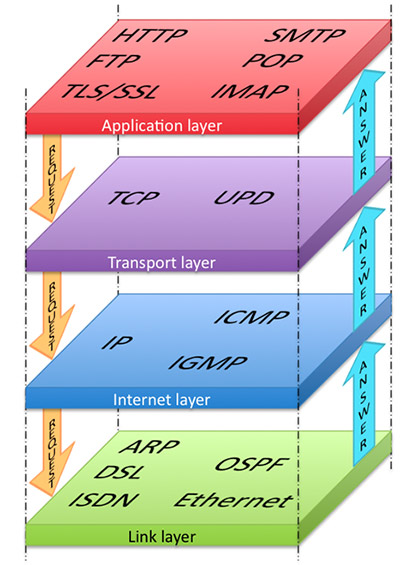The TCP/IP or Internet Protocol Stack
The TCP/IP or Internet protocol stack consists of 5 layers:
- application: supporting network applications
- Web, Email, Facebook, etc.
- transport: process to process data transfer
- TCP, UDP
- network: routing of datagrams from source to destination
- IP
- link: data transfer between neighbouring network elements
- Ethernet, WiFi, etc.
- physical: bits “on the wire”
- In some literature, the link and physical layers are presented together, so that the TCP/IP stack remains with just 4 layers.

Figure 6 Internet protocol stack
A graphic representation of the Internet Protocol Stack... by Bughunter from Wikipedia Public Domain





